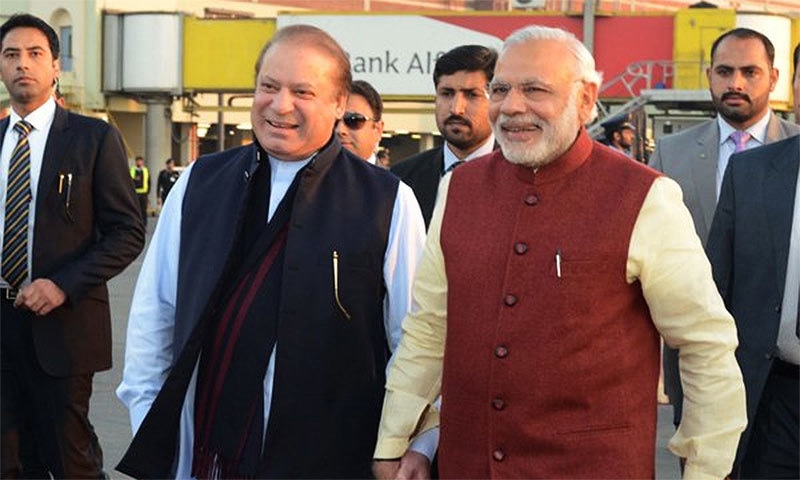On October 6, 2016, Indian troops killed three suspected militants who tried to attack an army base in Indian-administered Kashmir. The latest attack comes after India claimed it had carried out surgical strikes against Pakistan. Islamabad vehemently denied India’s version of events. The seven decades old protracted conflict has again evoked international condemnation and demands to settle the troublesome Kashmir issue.
Nevertheless, the world has been here before countless times and nothing seems to change. Cycles of violence are often accompanied by dialogue and some confidence building measures, which usually sap the momentum away from the settlement of Kashmir. Predictably, India and Pakistan blame each other and unsurprisingly the whole process reboots itself under the watchful eye of foreign powers.
The main reason behind the failure to resolve the Kashmir dispute—suggested by some—is the permutation in the number of solutions. Whilst this may be true, it is not the principal cause. There are three main solutions on offer, and Stephen Cohen in his book, Shooting for a Century describes the Kashmiri solutions contingent on hyphenation, de-hyphenation, and re-hyphenation of the Line of Control (LoC).
Hyphenation simply equates to solidifying the LoC between India and Pakistan into a permanent border—a status quo solution that formally splits Kashmir into Azad Kashmir part of Pakistan and Occupied Kashmir part of India. De-hyphenation is about turning the LoC into a soft border between the two countries and allowing free movement of goods and Kashmiris across the border. Re-hyphenation on the other hand equates to a mixture of the previous two solutions, and is intended to give Kashmir some semblance of independence, but with Pakistan and India administering aspects of economic and foreign policy.
The underlying reason for not settling the Kashmiri dispute has nothing to do with the various solutions on offer. Foreign power interference and internal challenges faced by both India and Pakistan in selling Kashmiri solutions to their own people are insurmountable obstacles.
The internationalization of Kashmir began with the Kashmir uprisings in the late eighties. Pakistan instigated the uprisings through extensive militant networks in order to deplete India’s economy. The aim was to bring India under America’s sphere of influence.
Post September 11, 2001, Pakistan abandoned the internationalization of the Kashmiri dispute and sought ways to strike a deal with India. Musharraf’s visit to Agra in March 2001 was the commencement of this process. Vajpayee who had shifted to American camp made Pakistan’s change in the Kashmir policy possible. America’s aim was to normalize relations between India and Pakistan; so that India’s huge population could act as a bulwark against China’s ascendency. However, the victory of the Indian Congress Party in 2004 put an abrupt halt to America’s normalization plans, as India once more shifted to the British camp. The Indian government reverted to Nehru’s traditional position on Kashmir – Kashmir belongs to India no concessions permitted. During Musharraf-Vajpayee years, a Kashmir deal may have been possible had it not been for the Pakistani public. The public mood towards any attempt by India to usurp Kashmir was hostile and any Pakistani concession to aid and abet India was regarded as high treason. This made it extremely difficult for Musharraf to make compromises on Kashmir.
With the election of the pro-American Modi as the Indian Prime Minister in 2013, it was widely expected that Pakistan and India would rekindle America’s frozen normalization plan. But the Indian public incensed by the Mumbai attacks of 2008 left little room for Modi to maneuver on the Kashmir issue. Instead he redirected his efforts on transforming the Indian economy. Another reason that makes it enormously difficult for India to cede parts of Kashmir to Pakistan is that the Indian elite fears the 20 odd secessionist movements would want similar deals. Nevertheless, America hopes to assuage Indian concerns by ensuring that Pakistan gives more concessions to make a deal palatable.
The current turmoil in Kashmir and the exchange of fire across the LoC is expected to continue and pave the way for America to intervene and work with Modi and Sharif to broker a deal. This is likely to take place after US general elections and will be one of the top priorities for the incoming President. It is quite evident that America wants to break away from its preoccupation with Syria and focus efforts on thwarting China’s menacing rise. India’s settlement of Kashmir is a central piece in America’s plans to expedite India’s military strength and nuclear might. Meanwhile, America’s plan is to weaken Pakistan after the settlement of Kashmir by forcing a reduction in its armed forces and rendering Pakistan a satellite of India. Hence, fulfilling Advani’s confederation dream.
Pakistan’s civil and military elite is aware of America’s nefarious designs against Pakistan but they don’t care. The onus is now on the Pakistani nation to rescue Pakistan from the jaws of Indian conspiracies and defeat. This is only possible through the re-establishment of the rightly guided Khilafah State. The Khilafah will unify the subcontinent under the banner of ‘La ilaha illa Muhammudur Rasoolullah’ and end foreign occupation of Muslim lands.
Abdul Majeed Bhatti
Written for Ar-Rayah Newspaper – Issue 99

